Matador Network's Blog, page 944
January 10, 2020
How to stick to your resolution

You know how it goes. Late December, sitting on the couch with a notepad — or a smartphone planning app — trying to think of a few innovative but manageable ways to be a better person in the new year. Among prompts to call home more often and floss regularly, upping your physical activity is likely to make the list. This is tough for many of us because, well, it requires physical activity, often early in the morning or at the end of the day when you’d much rather just post up on that same couch. Especially when that activity is done outdoors.
But plenty of studies have shown the health benefits of spending more active time outside. To help you plan and execute this resolution, we spoke with Amy Bruski. An outdoors professional and a Local Experience Instructor at REI, Bruski leads outdoors tours through the San Francisco Bay area and is an accomplished cyclist, both in the mountains and on the road. Here are her tips for building, and sticking to, an outdoor exercise routine.
Keep a positive mindset.

Photo: TORWAISTUDIO/Shutterstock
Bruski starts with a dose of positivity. “I appreciate the beginner mindset and encourage all growth towards an outdoor lifestyle,” she says. “I am not a physician or literary scholar, but I love to share my lessons learned and what has worked for me on a human level.”
Granted, for her, the “human level” includes completing epic feats on a bicycle such as the Leadville Trail 100 MTB race, the Death Ride, and the Everest Challenge Road Race. But let’s not get intimidated. This can be as small as a jog around the neighborhood park or a walk down a local trail. Start small, and build from there.
Set goals and work backward to accomplish them.

Photo: Click and Photo/Shutterstock
The good news is that by jotting down your intentions, you’re already off to a good start.
“I am most comfortable when I have a plan or have set goals,” Bruski says. “My plans usually have a purpose or a reasonably obtainable goal, a timeline or schedule and notes or log to track progress.”
So before you take off running, have an end goal in mind, like running a few miles three times per week, at a set time of day. Start small, and work your way up.
“If I was trying hiking for the first time I would start with a local park,” Bruski says. “Checking the website will give me some insight for what to expect from the trails and may have some feedback, tips, or reviews from fellow hikers that have enjoyed the trails.” She encourages outdoor recreators of all kinds to check REI’s trail apps for local routes and tips.
Measure your progress and celebrate small accomplishments.

Photo: everst/Shutterstock
Bruski notes that being able to see your progress is key to feeling good about the process, and to staying motivated.
“I am a goal setter. I do it in my daily routine and I challenge myself at every opportunity,” she says. “For example, I wanted to drink more water so I bought a clear 48 fluid ounce Nalgene bottle. I give myself the day to drink it starting when I wake up in the morning and I want to be done by 5:00 PM. My goal is clear, the achievement is obtainable, and progress is noticeable.”
There are undoubtedly going to be days when you don’t feel like exercising even though it’s on your schedule to do so. When this happens, success comes down to the first step in the process.
“When I am not feeling motivated I will tell myself to just get on and turn the pedals,” Bruski says. “Because I love it so much it works every time. After a few loops around the neighborhood, I usually want more and will ride longer or get more serious for that day’s activity. Variety is also a requirement for me. I love to plan new ride/run/hiking routes. When I set a new route I can’t stop thinking about it until I do it, then I do it and I want to improve it. So it is this thrilling cycle of planning, goal setting, discovery, satisfaction, and joy.”
Find an accountability partner.

Photo: Jacob Lund/Shutterstock
Staying active outdoors is similar to working on a team project at school or work in the sense that having someone else along to share the ride often pushes both people to do a better job. This can be a partner, friend, or a meetup group, as long as that person or group is at a similar ability level and shares the same end goal.
“I do think having a partner in exercise or outdoor activity can be helpful,” Bruski says. “A partner needs to be like-minded in goals and purpose. Someone who has a similar motivation and also has a supportive nature.”
She adds, however, that it will take personal motivation and the ability to count on yourself above other people to make your resolution stick.
“Sometimes, you will have to go solo,” Bruski says. “Discovering your ability to motivate, learn, and succeed for yourself is extremely satisfying and will only enhance your outdoor adventures.” 

More like this: The ultimate summer backpacking gear guide for newbies
The post How to keep your resolution to exercise more outdoors appeared first on Matador Network.

January 9, 2020
Tips for a ski trip with little kids

Going on a family ski vacation sounds like a lovely enough idea: being in the mountains, spending time away together, hanging out by the crackling fire at night. Yet the main point of a ski vacation is to ski, or snowboard, and that’s where things get complicated. Not everyone in your family may ski at the same level, and some of you may not ski at all. Suddenly your family vacation can seem like a logistical nightmare, trying to make sure everyone is having fun. Before you book that ski trip, follow these tips to ensure you get the vacation you’re looking for.
Set expectations

Photo: Eva Bocek/Shutterstock
Some hardcore skier friends of mine never schussed on anything other than green and a few blue runs during the years their kids were little. Some actually carried one tiny baby in a backpack while the other young child was on a leash in front.
Notwithstanding the fact that baby backpacks and leashes are dangerous, and not even allowed at many resorts, it’s hard to see the point of this. Who is having fun here? Not the kid on the leash, probably not the baby in the backpack, and definitely not the parent.
Before booking your ski trip, sit down with your partner (should you be traveling with one) and discuss what you both want from your ski vacation, and what you want for your kids. If you really want to get some good runs blasting through the moguls, decide the best ways you can manage to do that.
If you want your kids to learn to ski, there are better ways to do it than holding on to them as they slide, possibly terrified, on tiny skis in front of you — held back only by your own unyielding grip on their leash.
Divide and conquer

Photo: Eva Bocek/Shutterstock
It’s true that young kids ski free on many mountains and, by taking them on the hill with you, you get to enjoy the fresh mountain air, introduce them to one of your favorite sports, and save the babysitting money.
But a better way to do this might be for the parents to divide and conquer. Depending on what kind of ski pass you have, like the IKON and Epic passes that give you unlimited skiing at several resorts all season, it might make economic sense for one of you to ski in the morning and the other in the afternoon while the other one watches the kids. Or you may have to switch off by days.
If you do switch off in the middle of the day, you’ll be surprised how much earlier one of you gets out of the house, and how much later the other one skis, than you might otherwise on a ski vacay — and you both may actually get some good turns in.
Get a babysitter

Photo: Maria Sbytova/Shutterstock
Getting a babysitter in ski resorts is usually easier than you think. Most resorts have plenty of young people who need work, and you can usually tap into a well-established babysitting service. Babysitting Whistler has been providing excellent babysitters to needy parents for 14 years, the Lake Tahoe area is packed with babysitting services, and Babysitting in Vail has been around since 2002 — to name a few. Most of these services run background checks on the nannies they hire, and if you book in advance, you can ask for one of their more experienced sitters. A good babysitter will also know all the fun spots to take kids, from outdoor playgrounds to indoor jumpy houses.
Enroll the kids in ski school

Photo: Vladislav Gajic/Shutterstock
As soon as your kids are old enough, ski school is worth it. It may seem expensive now, but the more ski lessons your kids can have, the sooner they’ll actually be able to ski on the double black diamond runs you want to ski. The day they surprise you by showing you their favorite tree run on the mountain is when you’ll know the ski school paid off.
Good ski instructors know how to work with kids, and ski school days are structured to go at a kids’ pace — a pace that can seem agonizingly slow to parents who just want to get out there and carve some turns. Somehow, in between the timeouts for snowball fights and absurdly long lunch breaks, those instructors still find time to get the kids skiing, and you’ll be amazed how fast your kid progresses.
If you’re going for a longer ski vacation, try to find a ski school program that lasts a few days, so your child can see the same kids from one day to the next.
Pick the right resort

Photo: FamVeld/Shutterstock
If you have a choice of resorts, do your research beforehand. For one, not all ski schools are created equal. We’ve experienced fantastic ski schools in Whistler Blackcomb, and even in La Cerdanya, Spain, where three-year olds were given steering wheels to hold as they schussed and turned — on day one — down the barely angled slope. Can’t say we’ve seen anything cuter. But we’ve also found the Squaw Valley Ski School was more attitude than aptitude.
Different ski resorts have different starting ages for lessons. Call around as some offer lessons for kids as young as three. Others, meanwhile, have great day care programs for the under-threes or -fours. While one sibling goes to ski school, the younger one can go to “snow school,” which is usually a fun day hanging out with other toddlers.
Bigger resorts can also have more amenities for non-skiers, and more activities at the end of the ski day — from skating rinks to movie theaters. Also, if the parents will be switching off, it’s helpful to stay at a lodge or Airbnb that isn’t too far from the slope itself.
Enlist friends and grandparents

Photo: Muskoka Stock Photos/Shutterstock
Consider taking your ski vacations with another family or families. This will bring benefits on multiple levels. If the other family has kids your child’s age, then those little ones will have each other to play with, almost guaranteeing a more fun vacay for them. The parents can splurge on a babysitter together or enroll the kids together in ski school, so they can be in the same group.
If you have grandparents who live nearby, invite them along on your ski vacation. It’s usually a win-win for all parties, as the skiing adults can have a chance to ski on their own without feeling worried about the kids, nanna gets time with her grandchildren, and the kids also get spoiled by their grandparents.
Take care of a non-skiing partner

Photo: Maridav/Shutterstock
If one parent doesn’t ski — or is, say, pregnant or injured and is sitting this season out — the other parent shouldn’t assume that means a free pass to leave the house before the lifts open and return after apres with friends. They should find out what the other non-skiing parent wants from their time in the mountains and see how to accommodate that. The skier can head up to the mountain later so the non-skier can go to yoga in the morning, or take a couple of afternoons off so the non-skier can go snowshoeing or hit the spa.
Schedule time to ski together

Photo: Tomsickova Tatyana/Shutterstock
If your kids are old enough to be on skis, then plan ahead of time when you all will ski together and make that date clear to the kids. That way, the kids aren’t begging to get out of ski school or aren’t wondering why you all aren’t skiing together sooner. You’ll get your off-piste skiing thrills at the start of the trip, and then can enjoy seeing how your kids have progressed.
Do some non-ski activities

Photo: digitalskillet/Shutterstock
Not all kids love skiing the first, or even second, time they try it — but that doesn’t mean they won’t love their ski vacation. Take them sledding and ice-skating, make snowmen, and, if necessary, take them to the hotel or condo pool. (As miserable as this may seem to you, kids love swimming, even in the mountains, and this is your thank you to them for letting you ski the runs you want to ski.)
Don’t forget that nighttime is part of the ski vacation, as well, so bring cards or board games, or watch some fun movies together. Make sure that your ski trip feels like the full vacation that it should be.
Consider an all-inclusive resort

Photo: Paul Vinten/Shutterstock
There is a way to cut to the chase and make sure that the desires of even the youngest skiers are being met — and that’s through an all-inclusive ski vacation. Club Med, for example, has family-oriented ski resorts all over the Alps, one in Quebec, and has plans to open a second one somewhere in North America.
All-inclusive resorts take all of the logistical jiggering out of your ski vacation by incorporating lodging, food, lift tickets, and a lot more into a single price. This can include ski lessons at whatever level you’re looking for, daycare for kids as young as four months (at least at Club Med ski locations in Europe), and a host of evening activities, as well. There are even activities for teens, so that families with kids of different ages can feel like every member is looked after.
The Club Med all-inclusive model is not for everyone, and it has some drawbacks — like the fact that every meal is served in the same place — but kids seem to love it. 

More like this: The most unexpected, and awesome, places to ski around the world
The post How to actually have fun on a family ski vacation appeared first on Matador Network.

Budweiser to be brewed with solar

When it comes to sustainability in the beer world, you probably didn’t expect Budweiser to be leading the charge. Indeed, Anheiseur-Busch Inbev, the world’s largest brewer, has just announced that Budweiser will soon be brewed with renewable electricity throughout Europe. The announcement comes as AB InBev signed a deal with BayWa r.e., a global renewable energy developer, to purchase 100 percent renewable electricity for its European brewing operations.
Jason Warner, Zone President for Europe at AB InBev, said, “We know that sustainability is not just part of our business, it is our business. From recycling CO2 released in the brewing process to eliminating plastic from our packaging, we are constantly looking to not only reduce our environmental impact but to have a net positive effect.”
The new partnership will result in power being supplied by two solar farms in Spain, and the system will be fully functional by March 1, 2022.
With AB InBev’s 14 breweries in Western Europe, which brew over 50 brands (including Budweiser), all soon entirely powered by solar energy, this is the largest Pan-European corporate solar power deal in history.
When the beer goes fully renewable, you’ll know. The brand will feature a new symbol on the pack to make sure consumers know their beer is being brewed with 100 percent renewable electricity. 

More like this: 4 Middle East breweries that define the region’s burgeoning craft beer scene
The post Budweiser will soon be brewed with 100 percent renewable energy appeared first on Matador Network.

Where to surf in Ireland

For tourists, Ireland conjures images of picturesque countryside, dark beer, and mystical towns and villages. However, for surfers, Ireland hosts waves every bit as consistent as the pints of Guinness served in a real Irish pub. With many hundreds of miles of Atlantic-facing coast, Ireland gets surf all year round. Whether you are looking for gentle beach breaks or board-breaking slabs, somewhere in Ireland will have the kind of waves you are looking for. Here is what you need to know about surfing in Ireland and some great spots to check out around the Irish coast.
Surfing on the Emerald Isle

Photo: ianmitchinson/Shutterstock
While Ireland enjoys surfable waves all year, spring and fall bring the best of Irish surf, with lighter winds and warmer temperatures than you might find in winter and fewer crowds and bigger swells than in summer. Also, Ireland is also not quite as cold as you think. A 5/3 wetsuit will do for most of the year; during summer, a 3/2 wetsuit should be fine for shorter surf sessions.
While Irish lineups are no longer as empty as they once were, you can still find epic uncrowded surf on Ireland’s shores. A look at a map of Ireland’s Atlantic-facing coastline reveals hundreds of potential setups just waiting for the right combination of swell, wind, and tide. Even if you don’t find any secret spots, Ireland can still be a great place to go on a surf trip. To make the most of any Irish surf trip, fly into Dublin or Shannon, rent a car and go exploring.
Strandhill
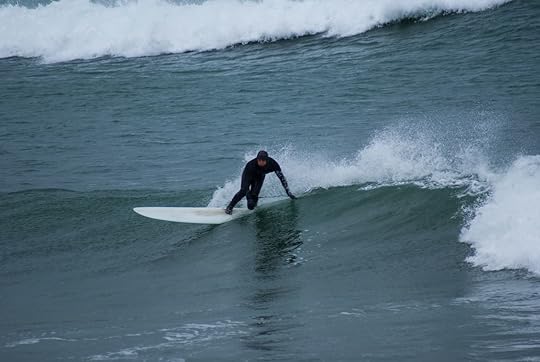
Photo: Njmcgrath1/Shutterstock
Strandhill is a small surf town on Ireland’s west coast around 2.5 hours from Dublin in County Sligo. The town leads onto a long sandy beach. Strandhill beach itself is a great surf spot in its own right at high tide. Home to several surf schools, Strandhill is also an excellent place to learn to surf when the tide is out. Strandhill town has an excellent selection of places to eat and stay and makes a great base for exploring Ireland’s northwest coast.
While Strandhill beach is not a bad surf spot, it’s the reefs nearby that make it worth sticking around here. The village of Easkey, around 20 minutes’ drive east, is home to a pair of right- and left-hand reef breaks that are some of the most consistently good surf spots in Ireland. Easkey Right and Easkey Left break at all tides and pick up lots of swell. The predominant southwesterly winds are also offshore here, which are the best kind for surfing. The coastline nearby holds a whole range of other spots that can be easily discovered by driving around the coast when the surf is up. Check out the town of Enniscrone on a big north swell, and you might find a legendary right-hander.
Bundoran

Photo: Rihardzz/Shutterstock
North of Strandhill, Bundoran lies within Ireland’s northernmost county, Donegal. Bundoran town looks straight out onto one of Ireland’s best waves: The Peak. This reef break, a short and hollow right with a longer left, is consistent and breaks from two to 10 feet high. The village also has a host of other spots within a short distance, including Tullan Strand, a beach break that is great to learn on and can have fun waves when everywhere else is flat.
Bundoran traditionally had a reputation in Ireland as a rough and ready beachside holiday location, but surf tourism boom is changing that. The town is now home to a whole range of surf schools, as well as some great new cafes and shops. You can now sip single-origin coffee while looking over one of Ireland’s best surf spots.
Beyond Bundoran itself lies even more excellent surf. A short drive in either direction from town will bring you to some of Ireland’s heaviest surf spots, including the famous big wave spot near Mullaghmore Head to the southwest. An infamously heavy left-hand reef called Pampa (named after an insurance company, for a good reason) is also near Bundoran. Pop into one of the local surf schools to ask for advice on where to go, and be sure to ask a local before paddling out at any new spots here.
Portrush

Photo: WATimmer/Shutterstock
At the top of the island, Ireland’s northernmost coast is often underrated as a surfing destination. Technically situated in a separate country, Northern Ireland, the north coast of County Antrim is a worthwhile surf zone in its own right. This area is famous for its Causeway Coast (home to the eponymous Giant’s Causeway) and picks up north swells year-round. The north coast also gets frequent offshore winds during winter storms and is home to some of the best beach breaks in Ireland.
The pleasant Victorian seaside town of Portrush is a natural place to base yourself for some northern Irish surfing. Portrush’s two beaches, East and West Strand, can produce some of the heaviest beach break surf this side of Hossegor, France. When decent-sized north swell coincides with easterly or southerly winds, sandy tubes rifle across East Strand.
Near Portrush, many other beaches can produce excellent surf on the right day too. Ten minutes’ drive east, Whiterocks beach is spectacular to look at but can also create some fun right-hand barrels when the conditions are right. For those in the know, the coastline here hides a few secret reef breaks that are best found by asking a friendly local surfer.
Lahinch

Photo: Rihardzz/Shutterstock
Located farther south on Ireland’s west coast, around three hours from Ireland’s capital, Dublin, the village of Lahinch used to be most famous for its golf. These days, Lahinch is as likely to be associated with tubes as tee-offs, and the County Clare village is fast becoming Ireland’s surf capital.
This new identity is due to both Lahinch’s location and natural setting. An hours’ drive north from Limerick city, Lahinch sits within Liscannor Bay in County Clare and has not only a long beach that is ideal for learning but also a suite of consistent left- and right-hand reef breaks that light up whenever a west swell meets southerly or easterly winds.
Lahinch village has some wonderful cafes and restaurants and is undergoing a food scene revival. Artisanal sourdough bread can be purchased 500 yard from some high quality reef breaks.
Only a few miles from the Cliffs of Moher, this part of County Clare enjoys a flat topography that has created a natural wonderland of waves. In and around Lahinch, you can find everything from peeling intermediate friendly reef breaks to big wave spots like the break at Aileens, which crashes underneath the Cliffs of Moher. If it’s flat in Lahinch, the beach break at Doughmore, around 30 minutes south, will have a wave.
Tramore

Photo: Keith Michael Taylor/Shutterstock
Visiting surfers often forget that Ireland’s southeast coast gets surf too. In fact, Tramore, a small town 15 minutes’ drive from the city of Waterford, is home to Ireland’s oldest surf club — established in 1969. Tramore’s location just 1.5 hours down the motorway from Dublin; a plethora of surf schools; and safe, easygoing surf all add up to make the beach in Tramore an ideal spot for learners.
Ireland’s southeast coast picks up swells from predominant southwest wind that is often onshore, the kind of wind that creates messy conditions. However, when the wind drops, or turns offshore, a range of surf spots along this coastline starts working and can rival any other spots in Ireland on their best day. Ask locals about the “incredible wave” and “the reef,” and they might tell you where to look. Otherwise, the beach in Bunmahon, 12 miles west beyond Tramore, is a brilliant surf spot when the wind goes west. Bunmahon is home to hollow beach break peaks and is within a stunning UNESCO designated area.
Like many other surfy places in Ireland, Tramore is benefiting from the boom in surf tourism. These days, a vast range of accommodation and other activities can be found around the town. 

More like this: The best places to go cold-water surfing this winter
The post The best breaks in Ireland’s booming surf scene appeared first on Matador Network.

Things to do in Crystal River, FL

Crystal River, Florida, may be the world’s only manatee town.
While the world has plenty of college towns and ski towns and government towns, this town of just over 3,100 has a booming economy based on… sea cows. That’s because the consistently warm waters in Kings Bay — which runs through Crystal River — make it a hotspot for manatees in the winter. And it is the only place in the world where you can get right in and swim alongside them.
From about November to March, the city teems with tourists from all over the world, and street signs throughout the city’s downtown direct visitors to dozens of outfitters who’ll happily take you out swimming with the sea cows.
Of course, getting here isn’t exactly easy, as once you’ve flown to America’s most southeastern state, you’ve still got a two-hour drive from Tampa or Orlando — or five from Miami — to get there. And since you’ve invested that much time, you might want to hang around for a few days.
The good news is that Crystal River has a lot to offer beyond just swimming with the manatees, as this lush region on Florida’s Gulf Coast is full of outdoor adventures, history, and some surprisingly good food. So once you’ve done the manatee thing, here’s what else to do in Crystal River, Florida.
Get back out on the water

Photo: Leela Mei/Shutterstock
While swimming with manatees, you may have noticed kayaks, paddleboards, and fishing boats sharing the crystal-clear waters with you. That’s because all these activities offer even more ways to see manatees, or at the very least check out some of the wilderness that surrounds Crystal River.
One of the best things about this town is that it’s completely walkable, and only a few blocks from downtown you’ll find Hunter Springs Kayaks, where you can rent any number of watercraft to get back out into the Bay. The coolest thing to rent is the clear plastic kayak, which allows you to look down into the water in case a manatee decides to swim under you.
You can take the kayaks or paddleboards over to Three Sister Springs, about a 30-40 minute paddle. Dock up there and swim into the springs where manatees often congregate on cold days, and you can snorkel with far fewer people than you would in the bay. Three Sisters usually charges a $20 entrance fee if you arrive by land but is free to swim through if you kayak there.
If the padding is more work than you’d planned to put in, Hunter Springs Park is a pleasant waterfront green space with a small beach and roped-off swimming area. Manatees also hang out in here from time to time, but even if they don’t, it’s a calming place to unwind during your vacation.
The rivers leading into town are also fantastic spots for shallow flats fishing, as they all lead out to the Gulf of Mexico and are filled with redfish, sea trout, snook, and tarpon. Deep sea fishing isn’t as big here as in other Gulf Coast destinations, but Florida Fishing Adventures can still show you a pretty fantastic day on the water. And might even help you catch your dinner.
Bike through Old Florida

Photo: Malachi Jacobs/Shutterstock
Though Florida gets plenty of acclaim for its white sandy beaches, few people outside the state are aware of the magical wilderness that lies just a little bit inland. North Central Florida is full of trials with rolling hills that move through oaks, magnolias, and palmettos, where herons glide across mirror-still lakes and Spanish moss drips to the ground.
The Crystal River Preserve has an easy, seven-mile loop taking you through all of that, and the Nature Coast State Trail and Florida Greenway are both accessible not far from downtown.
If you’re looking for a bit of a longer ride, drive about 20 minutes to Inverness, where David’s World Cycle sits right on the edge of the Withlacoochee Trail. Rent a bike here, then explore the 46-mile Rails-to-Trails trail, biking under miles of tree canopy, through charming little towns, and past pristine lakes. To get the full Florida experience, make a quick stop at Ferris Groves in Floral City, an orange juice outpost that makes for perfect in-ride refreshment.
Explore Inverness

Photo: Phil Lowe/Shutterstock
If you do opt to bike the Withlacoochee Trail, make a day of it and spend some time in the Citrus County seat of Inverness. Its most prominent feature is the Old Courthouse, the centerpiece of downtown that was also the filming locale of Elvis Presley’s Follow that Dream.
Surrounding the courthouse you’ll find one of the more under-appreciated historic downtowns in the state, with a number of buildings preserved from the early 20th century. Along Courthouse Square, you’ll find the Valerie Theatre, an old Art Deco movie house that now showcases everything from dance companies to local bands. You’ll also find the best pizza in Citrus County at Motor City Pasta Company, along with an impressive collection of wine. Or reward yourself with a post-bike-ride beer at Nine State Brewery, where Massachusetts transplants offer a dozen different beers on tap. You probably only need an afternoon to explore Inverness, but it’s a nice change of pace if you want to see more of the area.
Where to eat in Crystal River

Photo: Seafood Seller and Cafe/Facebook
Perhaps swimming with manatees has inspired you to become your best sea cow self. Though nobody’s confusing Crystal River with a dining destination, it does have enough good restaurants to fill a few days and won’t leave you with nothing to eat but drive-thru.
The most-renowned restaurant in town is Vintage on 5th, which like nearly all of the best restaurants here is in wonderfully walkable downtown. It sits in an old church just off N. Citrus Ave. where you can eat either in the pine-wood dining room, airy courtyard, or wraparound porch. The menu is finely prepared Southern comfort food — think bourbon-glazed pork chops and fresh-caught grouper. Plus, there’s a wine bar inside if you just want to sip and take in the ambience.
For something a little less formal, head a couple of blocks north to BubbaQues BBQ, also set in an old house on N. Citrus Ave. and home of cheap beer and perfectly smoked brisket. You’ll be surprised to learn it’s a multi-location restaurant because the meats and sides here are as good as any hole-in-the-wall spot you’ll find in the deep South. And the staff is excessively friendly.
For fresh seafood, you’ll want to head about a half mile from downtown to the strip mall around Big Lots on US-19 and Cajun Jimmy’s Seafood Seller. This is THE place to get fresh Crystal River seafood as nearly every local you’ll ask for a dinner recommendation will direct you here. It’s stripped-down and no frills inside, but the fish is as good as anywhere in Florida.
Breakfast and lunch are best enjoyed at Amy’s on the Avenue, another great spot along Crystal River’s main drag where you’ll enjoy fresh-baked pastries and sandwiches on a big, sunny patio. If you want something a little quicker, head about a block north on N. Citrus Ave. to Cattle Dog Coffee Roasters, a local coffee chain with hearty breakfast sandwiches and inventive flavored teas. If it’s sunny, enjoy your coffee on the porch and watch people stroll through downtown
Going out at night in Crystal River

Photo: Crew the Bar/Facebook
Crystal River has a beautifully preserved downtown along N. Citrus Ave., with the Shoppes of Heritage Village occupying old cracker cottages and bars and restaurants in buildings still standing from the city’s founding. It’s also home to the bulk of Crystal River’s nightlife, such as it is, best experienced at St. Johns Tavern. This pitched-ceiling tavern is where you’ll find most discerning locals after dinner, the only spot in town with a bit of an upscale vibe and a full cocktail menu. The brick walls and wood fixtures fit in perfectly with the historic downtown feel, and the full menu makes it a pretty solid option for dinner too.
If you find St. Johns too crowded, right next door is Crew The Bar, with a spacious outdoor area that is just as lively at night as it is for day drinking. Walking outside, you might hear live music coming from across the street. Likely it’s coming from Norton’s Riverside Sports Bar, which in addition having dozens of TVs and a wraparound porch also has live music some nights. It’s where you’re likely to find the younger crowd that goes out here, but don’t expect much past cold beer and good bar food.
Crystal River might not exactly be South Beach when it comes to nightlife, but that’s probably not why you came here anyway. Though marine mammals might be the main draw, this gem along Florida’s nature coast can be a legitimate outdoor getaway for more than just a manatee-filled morning. If nothing else, it’ll give you an appreciation for the natural side of the Sunshine State and show you the small-town charms hidden along the Gulf Coast. 

More like this: Jacksonville is the winter beach vacation you didn’t know you needed
The post Once you’ve swum with manatees, here’s what else to do in Crystal River appeared first on Matador Network.

Scariest extreme sports

With the 2020 Summer Olympics up ahead, sports are on everyone’s mind. Especially in light of the five new sports approved for this year’s games: baseball and softball, karate, surfing, skateboarding, and sport climbing. The latter three are classified as extreme sports. Dangerous as those sports may be, though, daredevils know that the world of sports holds a lot more exhilarating, and terrifying, possibilities than anything the Olympic Committee would ever approve. If you’re looking to start the new decade off with a bang, these are the seven scariest sports to watch, or try, this year.
1. Jallikattu

Photo: MOYYADEEN.S/Shutterstock
Running with the bulls in Pamplona, or perhaps in the Azores, is a bucket-lister for many thrillseekers. Fewer people plan trips around jallikattu, though. It’s a lesser-known custom from Tamil Nadu, India, that combines the best of bull running and bull riding. Traditionally, crowds surround a bucking beast as individuals take turns trying to hang from its hump while the bull tries to wriggle free. Part of the Hindu Pongal harvest festival, it’s a controversial sport that has resulted in a number of deaths, angered animal rights activists, and been banned more than once. Popular demand for the sport’s return saw the latest ban lifted in 2017, however. Pongal is celebrated for four days every mid-January, meaning the 2020 festivities are about to kick off with some seriously scary athleticism.
2. Coasteering

Photo: DawidAndMarcelina/Shutterstock
Many adventurers train for coasteering their entire lives, whether or not they realize. The action-packed sport combines activities like caving, bouldering, scrambling, cliff scaling and jumping, rock climbing, hiking, and, of course, swimming to navigate rugged intertidal zones. Perhaps the best place to try it on for size is Pembrokeshire, Wales, where it all began, though you’ll find no shortage of options in the UK, Ireland, Portugal, Greece, South Africa, Australia, and beyond. Coasteering doesn’t require any special training, and beginners are welcome, so long as they’re prepared for a thrill and some seriously sore muscles.
Though it’s unlikely to be added to the Olympic roster anytime soon, several adventure-based races and events have incorporated coasteering elements. In Australia, the Great Adventure Challenge traverses New South Wales, including almost a mile and a half dedicated to coasteering this October 17. Nelson, New Zealand, also puts on an annual Summer Challenge specifically for women, this year on March 21, daring teams of three to kayak, hike, mountain bike, and coasteer between three and 20 hours, depending on skill level.
3. Downhill fat biking
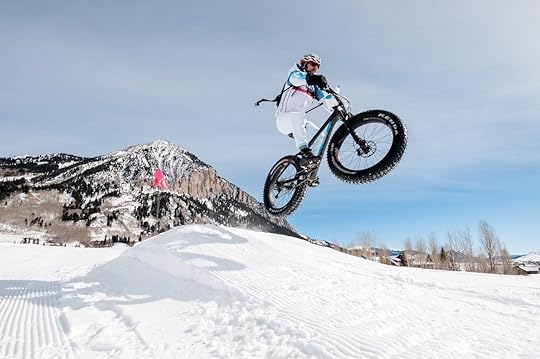
Photo: Fat Bike World Championships/Facebook
Downhill mountain biking elevates an already thrilling sport, literally, offering riders steeper tracks, greater speeds, and a variety of new obstacles. Fat biking grants riders access to even more challenging terrain, like snow and sand, due to its wide tires and low tire pressure. Join the two, and you’ve got one of the most heart-pounding activities you can do on two wheels.
Many of the best downhill fat biking trails are found in winter sports capitals like Park City, Utah; Cache Creek and Grand Targhee, Wyoming; and Crested Butte, Colorado, which hosts the annual Borealis Fat Bike World Championships, held January 24-26 in 2020. Elsewhere, you might try tearing up the singletrack in Dunedin, New Zealand, or speeding down Bolivia’s Death Road, possibly the gnarliest place in the world for good old-fashioned downhill mountain biking. For more information on fat biking, and fat biking events, check out the fat-bike website. While you’re at it, bookmark the International Cycling Union calendar for all downhill events, including the Swiss Snow Bike Festival scheduled for January 18 this year.
4. Canyoning

Photo: Ammit Jack/Shutterstock
Canyoning, canyoneering…whatever you call it, this technical, challenging sport is an extremely good time. Like coasteering, canyoning melds hiking, rafting, climbing, abseiling, waterfall jumping, and any other method necessary to get from one end of a canyon to the other. It’s no picnic for anyone with a fear of heights, but the scenery is hard to beat. Just look at hot spots like Kawasan Falls in the Philippines, Zion National Park in Utah, Arenal Volcano in Costa Rica, and Antelope Canyon in Arizona. Recently, Cradle Mountain Canyons in Tasmania also claimed its must-explore status, opening its nearly 100-foot natural slides to canyoners.
Plan an epic excursion on October 5, 2020, for International Canyoning Day, or join a meet-up like the 2020 Arizona Canyon Rendezvous on April 15-20 or 2020 Darkhorse Zion Canyoneering Rendezvous on September 16-20. Ficanyon.org is an excellent resource for all things canyoning, whether you’re just starting out or on your way to becoming an expert.
5. Ski flying

Photo: krumcek/Shutterstock
There’s no end to the audacious feats adrenaline junkies will attempt on skis. Joining the ranks of winter sports like heli-skiing, ski BASE jumping, and snow kiting, ski flying is yet another way to one-up the excitement of an alpine run, even if you exclusively ski double black diamonds. The concept is the same as ski jumping: skiers blast off from ramps and hurtle through the air to cover as much ground as possible before touching down on landing slopes. Where ski flying is concerned, the ramps are bigger, the distances longer, and the speeds greater, with fliers launching up to 70 miles per hour. Currently, Austrian ski jumper Stefan Kraft holds the record, having soared over 830 feet over the snowy ground on the ski flying hill in Vikersund, Norway. If you’re curious to witness the magic, or madness, check out the Ski Flying World Championships in Planica, Slovenia, on March 20-23, before trying it yourself.
6. Wing walking

Photo: AMMHPhotography/Shutterstock
Flying can be scary in the face of turbulence, even when we’re strapped safely in our seats. Skydiving is next-level terrifying, but neither holds a candle to wing walking, which demands a lot more composure than simply not passing out midway through a freefall. The idea to walk about on the wings of a moving airplane dates back almost as far as the airplane itself. After World War I, out-of-work army pilots who had discovered their ability to make mechanical adjustments and man firearms while in flight began performing wing-walking tricks in flying circuses, later finding work as stuntmen in Hollywood films.
Today, almost anyone can become a wing walker. Contrary to what you might think, the sport isn’t reserved for decorated military members, career pilots, or professional daredevils. Companies like AeroSuperBatics Wingwalkers afford anyone interested in the ultimate thrill the opportunity to ascend into the sky strapped to the outside of a biplane. All it takes is an insulated jumpsuit and a whole lot of grit. After braving takeoff, wing walkers have to contend with the g-force as the plane throttles, climbs, dives, soars, and facilitates flypasts.
7. Creeking

Photo: Ammit Jack/Shutterstock
Of all the water bodies, creeks don’t exactly scream adventure. Paddle a canoe or kayak down low-volume, fast-moving rapids, however, and the already exciting sports get that much more extreme. Creekers boat down steep, tight, hard-to-maneuver waterways in vessels outfitted for the roughest of whitewater. It’s challenging even for experienced rafters, with some beginner courses requiring prospective creekers to be comfortable with Class III rapids before attempting it. The conditions can be fickle, with too little water proving problematic and too much proving dangerous as it could hide holes, sieves, undercuts, and other obstacles. California’s Cherry Creek, near Yosemite, and Washington’s Little White Salmon River are go-tos for intrepid rafters in the United States, with the Stein River in British Columbia serving as one of Canada’s top spots. As a rule, coastal mountain ranges offer the best creeking conditions in spring and fall. 

More like this: 7 water sports you can still do when the temperature drops below freezing
The post The 7 scariest sports to watch, or try, this year appeared first on Matador Network.

Best citizenships in the world

Your country of citizenship can play a huge role in determining not only the quality of your daily life, but also your travel prospects. A new index released by Italian Dual Citizenships is revealing which countries have the best citizenship benefits across categories like passport mobility, parental leave, political democracy, equal marriage rights, human rights, women’s rights, property rights, and healthcare.
Due to its extensive efforts to provide benefits to its citizens, like 12 weeks of paternity leave and a progressive stance on same-sex marriage, Iceland took the index’s top spot. Its high ranking is also due to its stance on women’s rights, being one of only seven countries to have closed 80 percent of its gender pay gap.

Photo: Giancarlo Liguori/Shutterstock
Ireland ranked second, thanks partially to its high passport mobility; Irish passport holders can visit 170 countries without a visa or by obtaining one upon arrival. The length of maternity leave in Ireland is 42 weeks, which is much higher than Iceland’s 13. The paternity leave, however, is a let-down, with only two weeks given to new fathers.
The top 10 best citizenships rank as follow:
Iceland
Ireland
Finland
Sweden
The UK
The Netherlands
Denmark
Norway
Luxembourg
New Zealand
European nations dominate the top 10, especially Nordic countries.
Botswana and Cape Verde ranked the lowest, with poor scores across the board, particularly in healthcare and passport mobility. And perhaps surprisingly, the US falls in the bottom half at number 35 of 50.
It’s also interesting to note that the majority of the countries on the index, including seven in the top 10, scored a 1 out of 5 for paternity leave. 

More like this: How to find a job and move to Iceland
The post The best citizenships in the world, according to this new index appeared first on Matador Network.

Where to see ruins in Tunisia

Travelers make their way to Greece and Italy en masse to get their fill of archaeological sites, like Athens’ Acropolis and Rome’s Colosseum. But impressive ancient ruins are not just limited to those two nations; the vast Roman Empire extended all the way to the north of Britain, the Middle East, and North Africa, and left behind entire gorgeous cities packed with art. Tunisia, a sliver of North Africa wedged between the Mediterranean Sea and the Sahara Desert is filled with Roman ruins that you may not expect to see in Africa, but that are very much worth checking out. Here are the seven Roman archaeological sites you should visit to make for an archaeology-inspired trip to Tunisia.
1. National Bardo Museum

Photo: posztos/Shutterstock
The most logical place to start your tour of archaeological sites in Tunisia is the National Bardo Museum. Browsing its phenomenal collection of artifacts, dating all the way back to prehistoric times, is the best way to get acquainted with Tunisia’s history.
The museum, located in a magnificent 19th-century palace in the capital of Tunis, holds the largest collection of mosaics in the world. Literally from floor to ceiling, it is packed with mosaics of geometric, botanical designs, as well as scenes from mythology that feature all sorts of strange creatures. The impressive art is sure to please even the most reluctant of museum-goers.
You can tour the museum on your own, but we recommend that you hire a guide. That way, you’ll see the most important pieces and get the background for each of them without getting the dreaded museum fatigue.
2. Bulla Regia
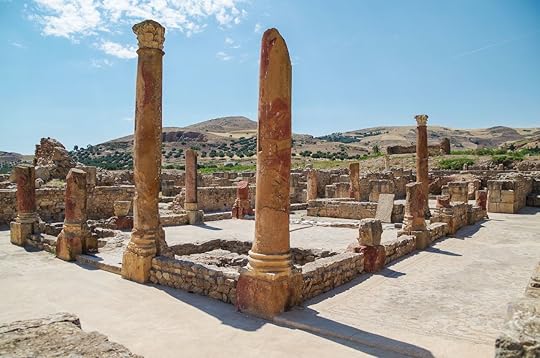
Photo: Marisha_SL/Shutterstock
Located in the northwest of Tunisia, about 100 miles from Tunis, the ruins of the formerly-prosperous Bulla Regia consist of former temples, a forum, public bath houses, a theater, and more that were built after the region became part of the Roman Empire in the first century AD. The most impressive part of the site, however, is the private summer homes created below ground to keep cool from the hot desert sun.

Photo: bumihills/Shutterstock
Visitors take ancient staircases and venture to the subterranean living quarters where they feel the temperature drop, and are wowed by the stunning decorative floor tiles. While the National Bardo Museum gives you a taste of the intricate Roman and Byzantine mosaics of Tunisia, Bulla Regia provides a fuller picture. The mosaics are in nearly impeccable condition, a feat considering they have been exposed to the elements for nearly two millennia.
3. Carthage-Byrsa

Photo: Romas_Photo /Shutterstock
Now a suburb of the capital city of Tunis and a UNESCO World Heritage site, Carthage used to be the powerhouse of the Punic Empire until it fell to the Romans in the second century BC. The area is spread out over 20 sites, so you should devote several hours to visiting it. We recommend hiring a guide to take a deeper dive into the 80-acre sprawling ruins.
If you don’t have hours ahead of you, or would like a condensed tour of the site, start with a quick visit to the National Museum of Carthage located on the Byrsa Hill. The most significant artifacts (mosaics, ceramics, figurines, etc.) found on the site during archaeological digs are displayed there and provide an introduction to the rest of what there is to see in Carthage. Next, make sure to walk around Byrsa, the ancient walled city that sits on the hill of the same name, as it is the star of the show. From up there, the view on the Gulf of Tunis is eye-wateringly beautiful.

Photo: Jess Kraft/Shutterstock
Along the shoreline, the Thermes d’Antonin, also known as the thermal baths of Carthage, are a massive public bath structure built by the Romans in 165 AD and are believed to be the largest thermal baths built in Roman Africa.
4. Dougga

Photo: Leonid Andronov/Shutterstock
The small ancient town of Dougga, which grew very prosperous during the time of the Roman Empire, is located on a hill in the north of Tunisia, about 70 miles from Tunis. Considered to be the best preserved town in Roman Africa, the 75-acre archaeological site is a UNESCO World Heritage site.
The structures still visible on the site bear testimony to the civilizations that occupied this land before and after the Roman annexation, like the large Roman theater with views of vast plains below, the Lybica-Punic mausoleum, and the Roman capitol. According to UNESCO, the site has more than 17 centuries of history — and you can see it all in just a one-day visit.
5. El Jem

Photo: Marques/Shutterstock
One of the largest coliseums in the world, El Jem is a 35,000-seat amphitheater that rivals the Colosseum in Rome. This UNESCO World Heritage site located between the cities of Tunis and Sfax, and built in the third century, is unique in Africa. The amphitheater is still used today for events like the International Symphonic Festival.

Photo: Marques/Shutterstock
The best way to enjoy the site from the outside is to sit at one of the local cafes across the street from the amphitheater. Once inside, be sure to take a minute or two from one of the seats at the top of the amphitheater to imagine the extreme gladiator flights that used to take place in the arena below.
6. Zaghouan Aqueduct

Photo: Lev Levin/Shutterstock
Supplying the ancient city of Carthage with fresh water, the Zaghouan Aqueduct was built in the second century after Romans took control of the area. Previously, Carthage depended on the storage of rainwater in wells and cisterns, but the newly-arrived Romans and the thermal baths they built needed a more reliable system.
The Water Temple, dedicated to the gods of water, sits on a spring that is the starting point of the 82-mile aqueduc. The Water Temple is very well preserved and must-see. Large parts of the aqueduct can still be seen today, including some of its highest arcades at 66 feet high.
7. Utica

Photo: Lev Levin/Shutterstock
The first African colony established by the Phoenicians, Utica later became the capital of Roman Africa. While there are beautiful mosaics on site, many of the artifacts are not present in modern-day Bizerte (about 60 miles northeast of Tunis); the archaeological excavations of the site in the 19th century had invaluable pieces channeled to museums in France and the UK. That said, the Archaeological Museum of Utica is worth a visit before visiting the archaeological park with its ancient Roman villas; it contains precious Punic and Roman ceramics, sculptures, jewelry, and more. 

More like this: 11 African ruins you need to see besides the Pyramids
The post Tunisia was part of the Roman Empire and has spectacular ruins to prove it appeared first on Matador Network.

Best eco-friendly wellness retreats
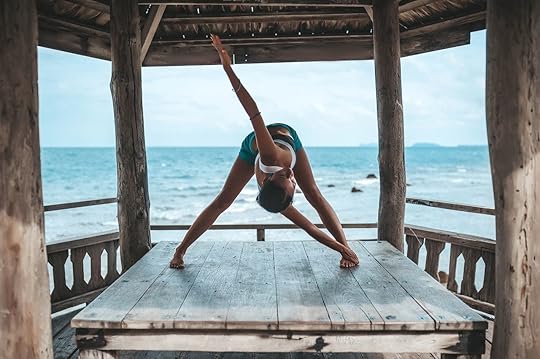
It’s January, the holidays are in the rearview mirror, and there is once again ample time to focus on ourselves. It’s around this time of year — perhaps while waiting for an ice-cold steering wheel to reheat, or sensing snowy sludge start to seep past a crack in our boot — that the concept of a little self-care sojourn, preferably somewhere sandy and warm, begins to sound real nice…maybe even non-negotiable.
Wellness travel is a lucrative niche in hospitality, and there’s no shortage of warm-weather wellness retreats to choose from. Yet if the last year taught us anything, it’s that individual action against climate change begins by choosing better with our checkbooks — in this case, choosing a retreat that prioritizes sustainability as much as self-care. After all, the two concepts are in so many ways integral to each other.
To get you inspired, here are five warm-weather wellness retreats that are as serious about taking care of you as they are about taking care of the planet.
1. BodyHoliday — Cariblue Beach, St. Lucia

Photo: The BodyHoliday/Facebook
If anticipation for the 2020 Olympics has you inspired to level up your fitness regimen this year, head to BodyHoliday in St. Lucia. With rooms starting at $650 per night, this all-inclusive wellness resort brings in Olympic athletes and trainers at the top of their field to help deliver a significant return on that investment.
Each day, guests choose from 40 different wellness activities, such as boxing, scuba diving, or archery. Looking for something a bit less high-octane? Meditation, tai chi, and yoga classes are also available. At BodyHoliday, guests don’t just work out like elite athletes, they get pampered like them too, receiving a 50-minute spa treatment of their choosing each day.
This year BodyHoliday introduces “theme months,” which are a calendar of specialized wellness programs tailored to special fitness interests ranging from dance to sailing. The resort extends its desire to change people’s lives beyond its guests, to include the local community in St. Lucia. BodyHoliday Cares, the resort’s charitable foundation, helps increase local access to education and skills development, quality healthcare like vision health and mental wellness resources, and funding for environmental conservation efforts on St. Lucia.
Cost: Starting at $650 per night
2. Six Senses — Multiple locations

Photo: Six Senses Laamu/Facebook
Eco-friendly wellness has been this luxury resort chain’s bread and butter since its inception in the mid-1990s. Today there are several Six Senses locations spread across Asia, Africa, and Europe.
Two warm-weather standouts include Six Senses Laamu in the Maldives and Six Senses Uluwatu in Bali. At Laamu, over-water villas provide intimate access to the marine wildlife Six Senses works so hard to protect, thanks to collaborative conservation initiatives with Manta Trust, Blue Marine Foundation, and the Olive Ridley Project. In Bali, guests help to prevent the extinction of Bali’s beautiful myna bird by planting papaya trees on the property, the fruits of which are donated to a breeding center for Indonesian birds, the Begawan Foundation. When not helping the resort sustain the local ecosystem, guests spend their days in group or private guided meditation sessions, hiking through local wildlife, and enjoying fresh organic meals, for which most ingredients are grown locally. In 2020, Six Senses adds to its collection with new openings in Israel, India, and its first US-based location in New York City.
Cost: Starting at $933 per night (Maldives) and $513 per night (Bali)
3. Root Adventures — Multiple locations

Photo: Root Adventures/Facebook
After years of experience working in adventure travel, Breanne Kiefner was tired of serving the same, routine itineraries to travelers more interested in sightseeing and Instagramming than truly connecting to a destination. She started Root Adventures to curate trips that combine wellness with conscious, cultural connection. Kiefner believes that travel has the life-changing potential to create passionate advocates for positive social and environmental change, which is why each wellness retreat mixes fitness programming with community initiatives or eco-minded outdoor exploration.
First up in 2020 is a trip to Costa Rica in January led by Jill Dailey, founder of cult-favorite, barre-meets-pilates workout class, The Dailey Method. Guests will partake in two wellness classes a day plus zip lining, surfing, and stand-up paddleboarding. In March, Root Adventures will lead a glamping excursion to Baja for those looking to practice living more mindfully. In addition to daily yoga and intuitive movement classes, expect more adventurous activities like kayaking and swimming with sea lions.
Cost: $2,695 per retreat (Costa Rica) and $1,975 per retreat (Baja)
4. Luna Lodge — Puntarenas Province, Costa Rica

Photo: Luna Lodge, Osa Peninsula, Costa Rica/Facebook
This conservation-minded wellness lodge in Costa Rica was a labor of love for owner, yoga instructor, and environmental activist Lana Wedmore, who also founded local conservation organization, the White Hawk Foundation.
Located on the Osa Peninsula near Corcovado National Park, Luna Lodge hosts group wellness retreats as well as the individual traveler looking for a secluded space to unplug for a bit. Here mornings bring a symphony of tropical bird songs and evenings might be spent relaxing to the distant rumble of a passing storm. Wellness activities are inspired by Wedmore’s deep love of nature — what she believes to be the best medicine. Wedmore shares that love with her guests via guided hikes and “forest bathing” in the rainforest, or leading open-air yoga classes on the lodge balcony overlooking expansive views of the tropical terrain. After a day of adventuring, guests can relax in the gentle sway of a hammock or cozy up with a warm cup of cacao while watching the sun slowly dip behind the trees.
Cost: From $248 per night
5. The Treehouse — Los Angeles, United States

Photo: The Bel Air Treehouse/Facebook
Many wellness trends from the last decade came to the US by way of Los Angeles, and this hotel in the city of angels brings them together under one roof.
At The Treehouse in Bel Air, LA’s only fully vegan hotel, you feel the owners’ meticulous attention to detail when it comes to maintaining “good vibes only” as soon as you walk through the door. Crystals are strategically placed to keep energy in balance. Guest rooms benefit from regular feng-shui-ing. Even the natural spring water for hydration and tea-making is cleansed using green lasers. After fueling up with a plant-based breakfast paired with a mug of biodynamic coffee, guests can venture into the city armed with recommendations for the best crystal shops or plant-based eateries from Hedda, the hotel owner. With just four bedrooms, Hedda and her husband, Cedric, are able to offer a more individualized wellness experience for each guest.
But one thing is true for all guests — there is no smoking or alcohol allowed, and food and beverage offerings are entirely organic and plant-based. The commitment to a plant-based diet is just one facet of a larger commitment to the environment that includes being zero waste, and only sourcing products from sustainable and ethical sources. The hotel is partnered with Kiva, a global nonprofit that facilitates loans to economically disadvantaged entrepreneurs around the world to help empower small business owners.
Cost: Starting at $175 per night 

More like this: The ultimate fitness challenges for 2020 you need to sign up for now
The post 5 eco-friendly, warm-weather wellness retreats to kick off 2020 appeared first on Matador Network.

One day skiing in Aspen on a budget
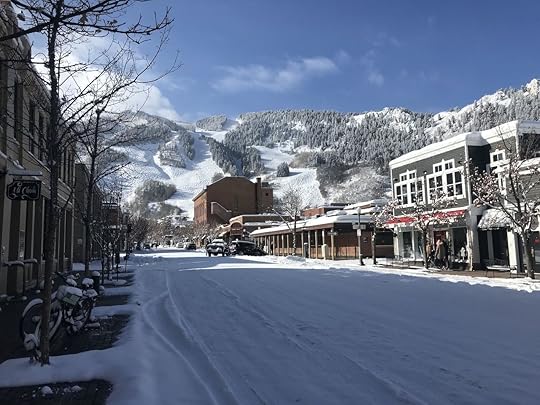
Aspen’s reputation as a hub for the ski elite, where stars make the same sloppy ski turns as common people, is well-earned. But the beer does flow like Veuve, if you know where to look. You still might bump into Bono or Barack Obama at Surefoot, sizing up boots for a day on the slopes. You just happen to be spending far less money for the experience. Here’s everything you need to know about saving money on a winter trip to Aspen, according to tips from locals — not the Kardashians.
Before you arrive, book your stay in advance.

Photo: Mountain Chalet Aspen/Facebook
A Google search for “hotels in Aspen” is enough to jump the heart rate. For most people, $475 for a three-star room is about enough to send those ski trip plans elsewhere.
Not so fast.
There are two places you can book well in advance of your trip in order to keep the lodging cost down to a better-than-reasonable level. A room at the quaint St. Moritz Lodge, right downtown and a mere 12-minute walk from the gondola, is less than $100 per night even on weekends and during ski season. There are also rooms with double twin beds so you can double up with your friend and cut the cost down even further.
The Mountain Chalet is the town’s other affordable standby. It has small, compact economy rooms that sleep up to four people and run between $119 and $259 depending on when you visit. The Chalet also offers dorm rooms with individual bunks running between $59 and $109. And most of its rooms have vaporizers, making it one of the few places in town where tourists can legally toke up.
Should the St. Moritz and Mountain Chalet be unavailable, your next best bet is to get on Hotel Tonight. Even in Aspen, you’re bound to find a hotel with a room that it would rather offer at a discount than shut the light out on.
Start your day with the local specials.
There’s an underground economy at work in every ski town — as it’s the only way many hourly employees can make life work there. Aspen is no different. Locals hook up other locals, and they all tend to migrate in packs toward food deals.
Aspen Highlands gives away free hotdogs on Wednesdays, and cafeterias at any of Aspen’s four mountains offer free pancakes when it snows eight or more inches, in a deal aptly titled “Powder Pancakes.” Add them to the free morning coffee and afternoon hot chocolate and you have a full-on powder feast for the price of nil.
In town, the untold hero of the morning dining scene, Aspen Over Easy, is more of a breakfast club than a restaurant. Inhabiting the top floor of the Gap building downtown, it serves a traditional American breakfast for less than the cost of a beer on the hill. This locals’ favorite reopened last December after a two-year hiatus. Ask the front desk at your hotel (or your Airbnb host) for the full lowdown, as it’s pretty hush-hush.
Walk right past the ticket window.

Photo: Aspen Snowmass
Speaking of lift tickets, the number one rule in ski trip hacking is to never, ever, walk up to the ticket window at a major resort the morning you hope to ski, without at least a coupon working in your favor. In Aspen, this is a surefire way to shell out over $200 for a day on the hill, once you add in lunch costs.
Instead, look at Liftopia, which offers tickets at a steep discount. If you plan to ski multiple days, consider the Ikon Pass or Mountain Collective. At the very least, visit the Aspen Snowmass website and buy a multi-day lift ticket at least a week in advance and enjoy a slight discount. If you’re a parent and your kid is under six, they can go for free.
Grab lunch to go.

Photo: 20_Grill_Aspen/Facebook
The best option for midday eats is The Big Wrap, a burrito counter offering giant wraps, tacos, and salads for single-digit prices. It’s cash only, which is the only catch. Alternatively, try 520 Grill, a burger-and-fry spot that also does hearty soups and salads. Both are perfect grab-and-go options that allow you to get back to the slopes quickly and without breaking the bank.
Bar menus are the ultimate Aspen dinner hack.
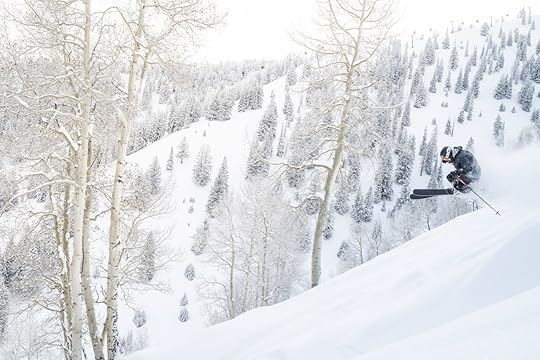
Photo: Oliver Sutro/Aspen Snowmass
In a town where $47 dinner plates are not uncommon, one hack consistently lands budget-conscious travelers a cheap meal: bar menus. Most restaurants and pubs have them, offering smaller portions and alternative options to the full menu. Sit at the bar, order a round of beer, and go to town on cheap eats. You may have to dine during happy hour or after the dining room shuts down for the night, but at least you’ll have money left over for a lift ticket. This is also a great way to get into a popular joint without a reservation.
The perfect example is L’Hostaria. This high-end Italian kitchen serves incredible seafood and the best ravioli al pomodoro in all of Colorado, but it’s pricey. Sit at the bar, though, and stick to the bar menu to feast on its homemade pasta for far less than in the dining room — including those same ravs al pomo at nearly half the cost and in a far more social setting.
The same hack works for more casual settings as well. At Su Casa, the kitchen simplifies its Mexican dishes into a taqueria menu served only at the bar. An al pastor taco will run you $3.50, while its famous Yucatán fish taco is only $3.75. Order three of these and a Margarita and you’re set. However, you may just want to stick around for a while because the social scene at the bar tends to pick up around 8:00 PM. 

More like this: Aspen Snowmass raises the bar on ski resort sustainability. Who will follow?
The post How to hack winter in Aspen on a budget appeared first on Matador Network.

Matador Network's Blog
- Matador Network's profile
- 6 followers



